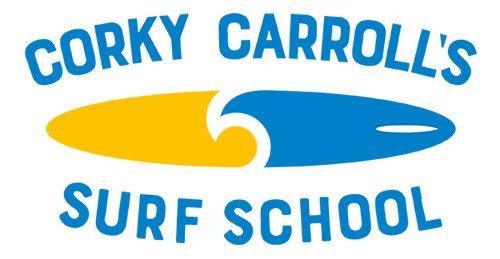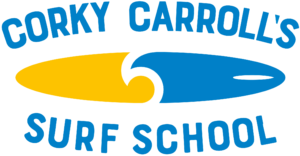Because the ocean is part of nature, you should always have a keen awareness of your surroundings: currents may make you drift north or southward; riptides can pull you out deeper into the ocean. But with time and practice, you will know for which waves to paddle and from which conditions to stay away. Follow these seven steps in learning how to surf and you will soon be on your way in becoming the best surfer you can be through respect for the ocean and self.
Step 1. Choose the best board for you.
The best board from which to choose does not mean selecting the most expensive board; it does not mean selecting a big brand board; it does not mean selecting a colorful, artistic board. You want to make sure that the height and width are suitable to your skills.
When you are confident to purchase your own surfboard, keep these considerations in mind. But start with a soft top longboard when learning how to surf.
Step 2. Wetsuit, wax, leash, and sunscreen.
Other than a necessary surfboard, you will also need these other surf essentials. Rarely is it warm enough to surf in a bikini or trunks year round. Wear an appropriate wetsuit according to the water’s temperature. Typically, you can get away without a wetsuit in the summer time, or wear a spring suit. In the fall and spring, a 3.2 mm wetsuit is advised. And during the winter season, at least a 4.3mm wetsuit is recommended.
It is nearly impossible to surf without waxing your board. Make sure to wax the areas of your surfboard that your body needs to stick to. For instance: where your feet are placed or where your chest lies when paddling and the rails.
You want to wear a leash around your ankle in order to have more control over your board. For example, if you let go of your board when a wave crashes on you, the leash will prevent the board from washing ashore. Just before you enter the water, securely fasten the leash on your ankle of the back foot. When you learn how to pop up, you will discover which foot goes in the back.
Lips, nose and ears are the most sensitive areas of your face that are exposed to the sun because they are raised. Make sure to apply sunscreen all over, but especially those features.
Step 3. Paddle, Paddle, Paddle.
Surfing consists of paddling more so than riding a wave. Paddling can take a lot of energy until you make it to lineup. It is vital that you use only the amount of energy necessary when paddling. The only movement should be in your arms- not your legs or hips. Make sure that your hands are cupped and fingers closed without any space in between. Arch your back and keep your feet together in order for agile mobility. Locate the board’s stringer, which is typically a wooden line that stretches from the nose to the board’s tail. Align your nose with the stringer to balance yourself on the center of the board.
If a small wave breaks in front of you, go “up and over.” Simply place your hands below your chest as if you were performing a pushup. Only lift your chest and keep your legs on the board. If the wave is too big to complete an “up and over,” then do a “turtle roll.” Roll over either to the right or left side of your board. You will be upside down, facing the sky, underwater for a couple seconds. Hold a tight grip on the rails and rest underneath your board until the wave passes. Flip back over and keep paddling until you reach the lineup.
Step 4. Sit on your board.
Once you have made it to the outside, you can sit on your board. Start with a push up position and swing both legs on each side of the board. Your butt will naturally sit on the board, but make sure it is sitting on the center of the board so you do not tip over. When you see a wave you like, add weight to the tail and turn your body. This way, you will turn around quickly toward the shore.
Step 5. Catch the wave and pop up.
In order to catch a wave, you must paddle for it. If you notice the board is nosediving, then scoot back on the board- too much weight is near the nose. If you are paddling as hard as you can and still cannot catch the wave, then scoot forward on the board. In this case, you would need a little more weight toward the nose. The perfect place to locate your body when catching a wave is called the waterline. The waterline is where the water crosses over you board. Your upper chest should remain below this water line.
Once you are in motion with the wave, pop up to your feet. Place your hands below your chest to a mini push up. Then, drag your front foot forward and keep your back foot behind your front foot. Place your feet in the center of the board along the stringer, but stay low with bent knees to help stabilize yourself. Remember to keep enough space between your feet for more balance. Angle your front foot toward shore and pivot your back foot left or right, depending on your stance. You will either have a goofy or regular stance. If your right foot in forward, then your surf stance is goofy. If your left foot is forward, then your stance is regular.
Do not delay popping up, because you will feel comfortable lying down. But also do not pop up too quickly in the event you have not fully caught the wave. Never go to your knees before standing up. You may think it will help you get to your feet, but it will only get you stuck in that position; it is a hard habit to break.
Step 6. A graceful wipeout.
It is inevitable that you will wipeout- even the professionals will fall down. When you lose your balance and plunge in the water, wrap your arms around your head and face. Protect those areas from the moment you fall to when you surface. Try not to fall in front of your board. Rather, fall to the left or right side. In these circumstances, the board is susceptible to hitting you. The ocean is a wild environment, so safety should always come first.
Step 7. Know how to get out of the water.
Just as you would when entering the ocean, shuffle your feet along the sand to avoid getting stung by a stingray. Never stomp your feet while in the water. You can either catch a wave all the way to shore or paddle in. If you do ride a wave in, be aware of your fins- you would not want to have them loosened by getting stuck in the sand. If you paddle in, do not fix your gaze on the beach. Keep looking back at the horizon. You never want to fully have your back turned against the waves unless you are surfing.
Take your leash off and wrap it around the board when you are on dry sand. If you try to do this in the shore break, the board will possibly hit you on the head.
We hope reading these steps have made you more confident in learning how to surf. Surf camps and lessons are helpful in getting the hang of it, but you are ultimately your best instructor. Don’t stop surfing after camp- keep it up! Surf with friends that are either at your level or better; you can always learn from others. When the waves are bad, watch professional surf videos and memorize the way they surf. If you want to become a great surfer, be patient, humble and determined. And no matter the progression of your surf skills, keep the stoke alive.


